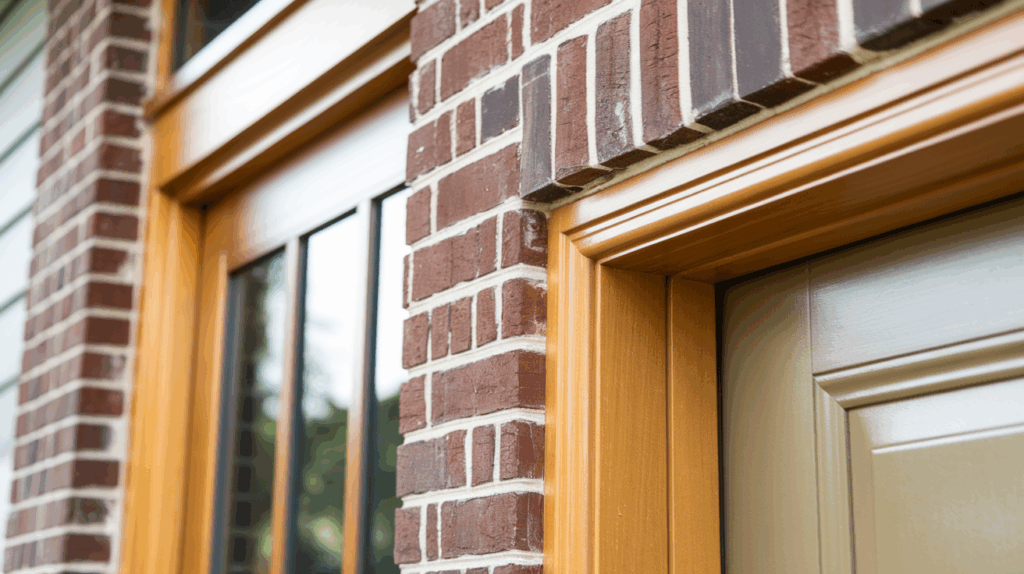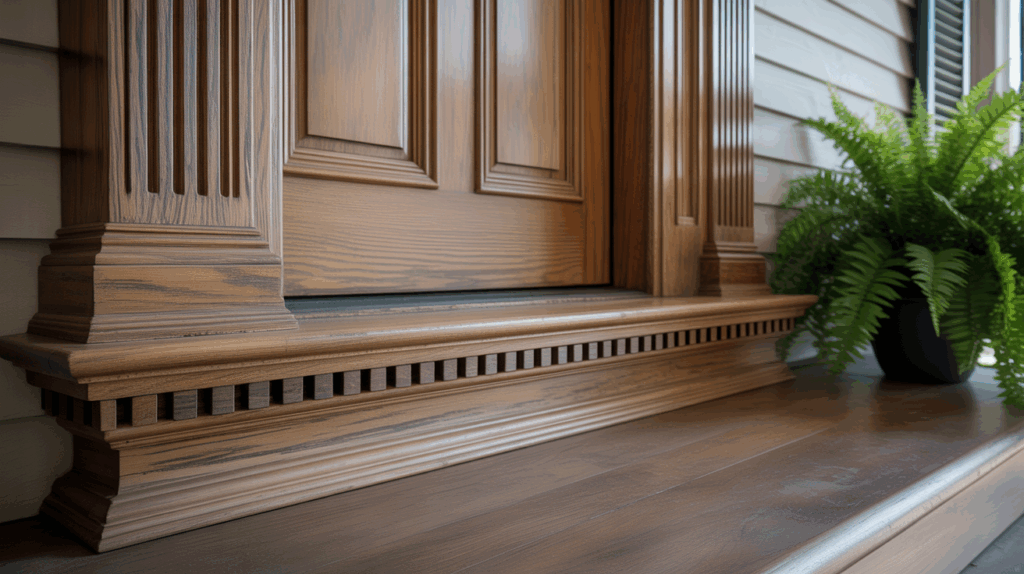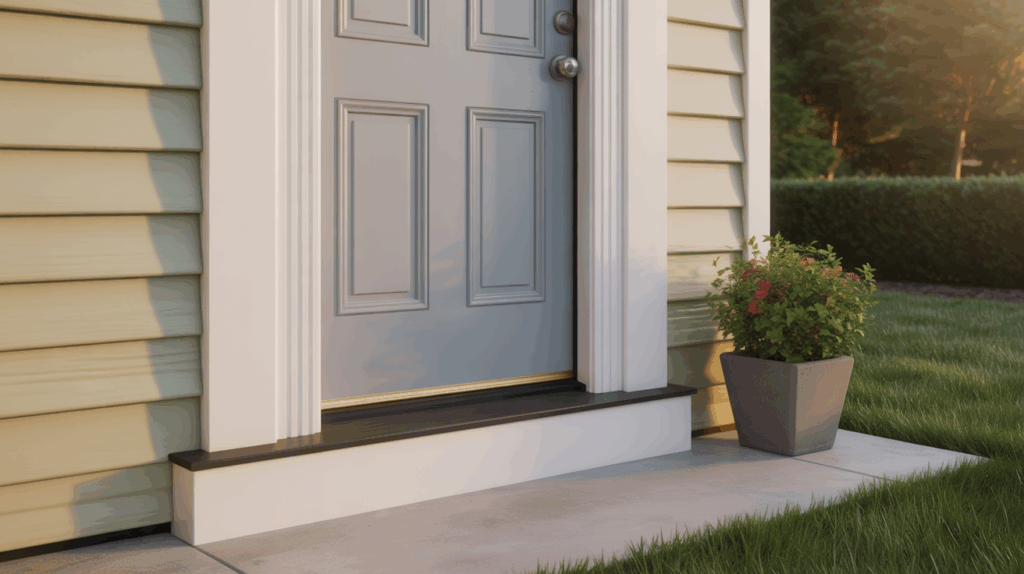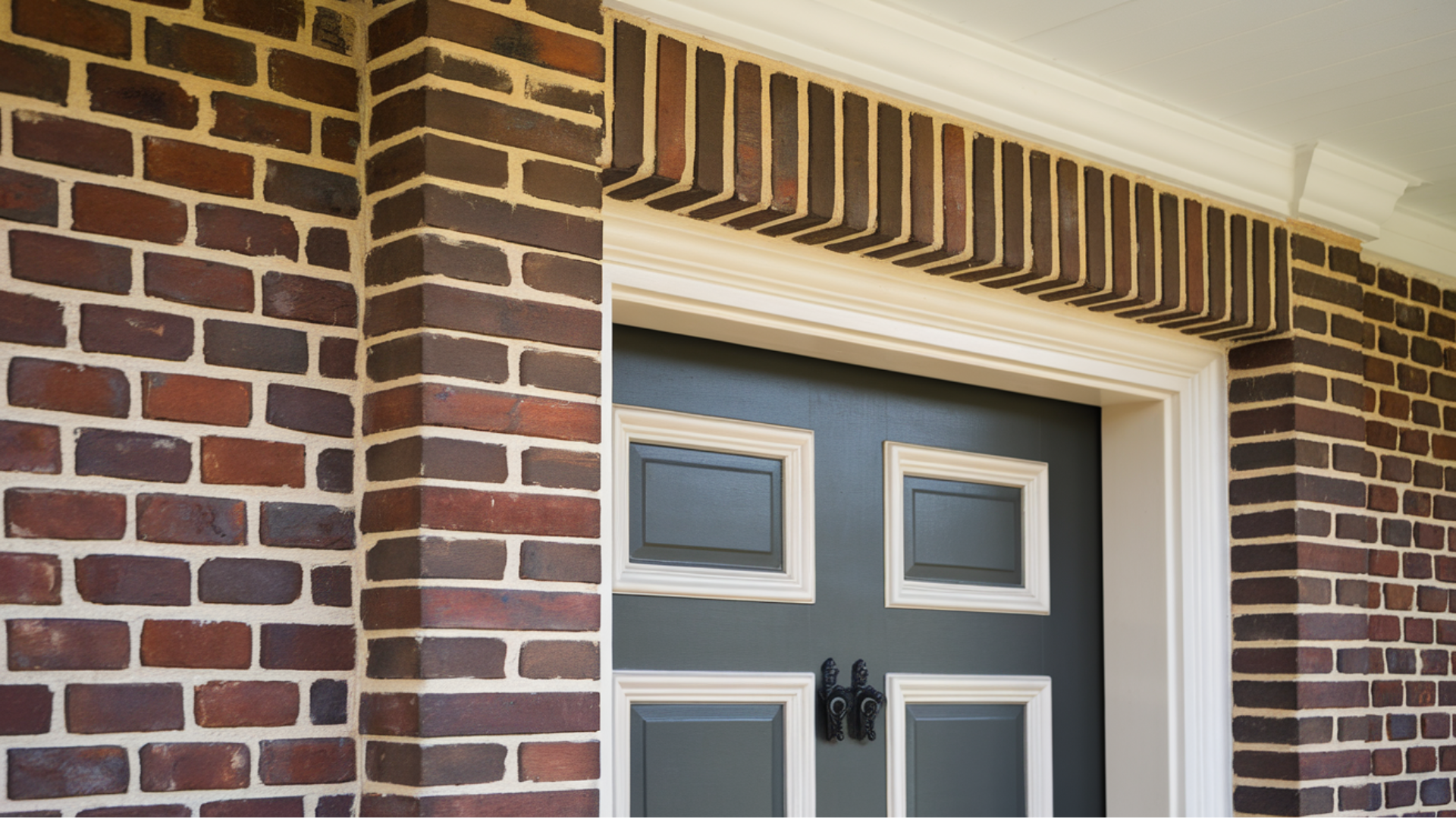When I replaced my old storm door last spring, I kept running into the word “brickmold” and had no idea what it meant. If you’re in the same spot, you’re not alone. This article breaks it down simply and clearly.
You’ll learn:
- What brickmold is and why it matters
- The different materials that are used
- Tips for Installing and Maintaining Brickmold
We’ll also cover the common types, materials, and how it’s installed. I had to replace the back door on my old house last fall, and I had no clue what brickmold was.
Turns out, it made a big difference in sealing the gap between the frame and the siding.
If you’re working with a pre-hung door or repairing a frame, this guide gives you the info you actually need, plain and simple.
What Is Brickmold on a Door?
Brickmold is a type of trim or casing that wraps around the exterior frame of a door.
Despite its name, brickmold is not made from brick. Instead, it is commonly crafted from materials like wood, vinyl, or composite (PVC).
It’s typically found on pre-hung doors, which come with a frame and are ready to be installed as a unit.
This trim serves multiple purposes, including covering the gap between the door frame and the exterior wall, improving the appearance of your door, and protecting the frame from the elements.
Without it, your door frame would have an unfinished look, and there would be gaps that could let in moisture, air, and dirt.
Additionally, brickmold helps to seal the door frame, preventing drafts and improving energy efficiency by keeping the elements out.
Why Is Brickmold Important?

Brickmold does more than just make your door look good. It also offers a variety of functional benefits that help protect your door and maintain its longevity.
1. Visual Appeal
The primary reason many homeowners choose to install brickmold is for its look. When you install brickmold around your door, it creates a clean and defined boundary that finishes off the frame nicely.
It gives your door a clean, finished look that makes your entryway feel more put-together and welcoming.
There are many different styles of brickmold to choose from, ranging from simple straight-edged profiles to more intricate designs.
Depending on your taste and the style of your home, you can select the right design that complements your door and enhances your home’s exterior.
2. Protection Against the Elements
Another significant benefit of brickmold is its ability to protect your door frame from environmental factors like rain, snow, wind, and moisture.
Without protection, water can get between the door frame and the wall, causing rot, mold, or mildew.
Brickmold serves as a barrier that seals the door frame and keeps moisture from getting inside. This can prevent costly repairs in the future and help maintain the integrity of your door.
In areas with high humidity or extreme weather conditions, brickmold can be an especially crucial addition to prevent the frame from deteriorating.
3. Increased Durability
In addition to its protective function, brickmold also helps reinforce the structural integrity of your door.
Over time, doors can experience wear and tear from being opened and closed repeatedly. Brickmold reinforces the door frame, keeping the door aligned and working well. Its material also affects how long it lasts.
Vinyl and composite materials are more resistant to moisture and physical damage compared to wood, which may need more frequent maintenance.
A strong, durable brickmold will help ensure your door remains stable and secure for years to come.
4. Enhancing Exterior Appearance
If you’re looking to increase your home’s curb appeal, installing brickmold is an easy way to do it.
A well-chosen brick mold can make a significant difference in the visual impact of your entryway. It helps your door stand out by creating a more refined, polished look.
Even though it’s a small feature, brickmold adds an extra layer of detail that enhances the overall appearance of your home.
If you’re planning to sell your home or simply want to refresh your front entry, brickmold can contribute to a more appealing and attractive exterior.
Materials Used for Brickmold
When it comes to brickmold, the material you choose can affect its appearance, performance, and maintenance needs. These are some of the most common materials used for brickmold:
1. Wooden Brickmold

Wooden brickmold has been a traditional choice for many years because it offers a classic and natural look that complements a variety of architectural styles.
It comes in pine, oak, or cedar and can be stained or painted to match your home.
However, wood does require regular maintenance to ensure it stays in good condition. Over time, moisture can cause wooden brickmold to warp, crack, or rot. To keep it in good shape, it should be sealed or repainted regularly.
2. Vinyl Brickmold

Vinyl brickmold is a low-maintenance option that’s resistant to moisture, cracking, and rotting. It’s durable, easy to clean, and doesn’t require painting.
Vinyl is a practical, budget-friendly option, ideal for humid or rainy areas. The downside to vinyl is that it can lack the natural beauty of wood. It tends to have a more modern, uniform look, which may not suit all types of home design.
However, it’s a solid choice if you prioritize durability and ease of maintenance.
3. Composite (PVC) Brickmold

Composite brickmold is made from a blend of materials, typically combining PVC with other polymers. This material offers the durability of vinyl with the appearance of wood.
It resists moisture, won’t warp, and is generally more durable than wood. Composite brickmold is also low-maintenance and doesn’t require painting.
Composite costs more than vinyl but blends wood-like looks with better durability and weather resistance.
When Should You Consider Brickmold?
Brickmold isn’t always necessary, but it can be useful in certain situations. These are a few scenarios where you might want to consider installing brickmold:
- Installing a Pre-Hung Door: Pre-hung doors come with a built-in frame, and brickmold adds a neat, finished touch. It’s a simple way to finish the install and protect the door frame.
- Replacing an Existing Door: If you’re replacing an old door, brickmold is a great option to refresh the look of your entryway. It can help cover any gaps or imperfections around the frame, creating a polished and neat appearance.
- In Areas with Extreme Weather: If you live in an area with heavy rain, snow, or humidity, brickmold can provide extra protection for your door frame. It helps block water from getting into gaps and causing long-term damage.
- For style Purposes: Sometimes, you might simply want to improve the appearance of your door. To give your entryway a more finished, professional look, adding brickmold is a simple solution.
Tips for Installing and Maintaining Brickmold
Installing brickmold the right way helps protect your door frame and improve your home’s exterior. With a few simple tools and some regular upkeep, you can keep it looking great and working well for years.
- Choose the Right Material: Choose brickmold based on your climate; vinyl and composite handle moisture well, while wood looks classic but needs upkeep.
- Measure Twice, Cut Once: Ensure your brickmold pieces are measured accurately before cutting. This will save you time and effort, and help ensure a clean, professional look.
- Use Sealant for Extra Protection: After attaching the brickmold, always seal the edges with a high-quality caulk, especially around wood brickmold. This will prevent moisture from getting in and causing damage.
- Consider the Style: Choose a brickmold design that complements the style of your door and home. A simple, clean profile can work well for modern homes, while more intricate designs suit traditional styles.
- Routine Maintenance for Wood: If you’re using wood brickmold, remember to periodically check for signs of wear and apply a fresh coat of paint or stain to protect it from the elements.
Conclusion
I hope this gave you a clear idea of what brickmold is and why it’s useful. It’s a small part, but it can really improve how your door looks and lasts.
If you’re planning a new door install or just fixing up your entry, brickmold can add both style and protection. I’ve used it on my own doors, and it made the whole frame look cleaner and more solid.
Just remember:
- Pick the right material for your weather
- Seal and maintain it
- Check it now and then for wear
You don’t need to be a pro to handle it. With a few tools and some time, you can install or replace it yourself. And if you ever get stuck, it’s okay to ask for help.

